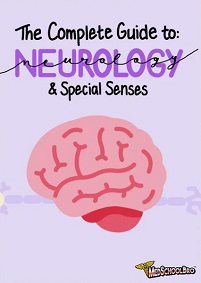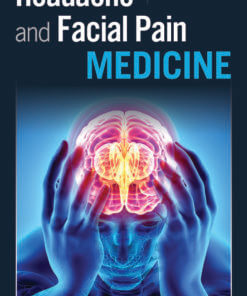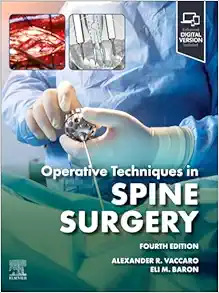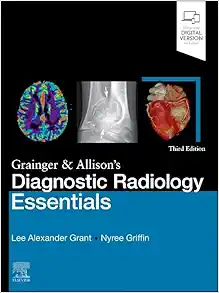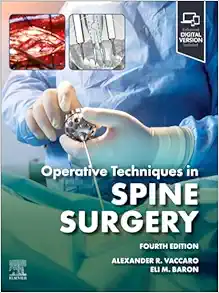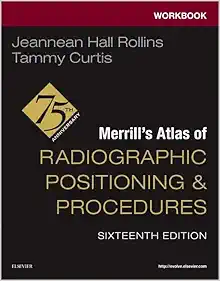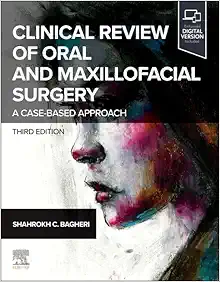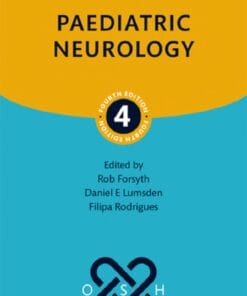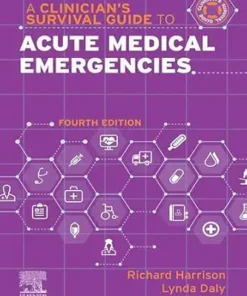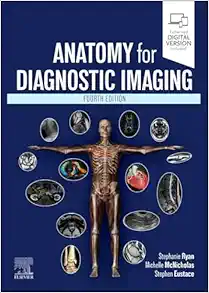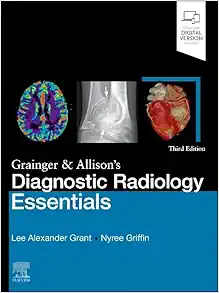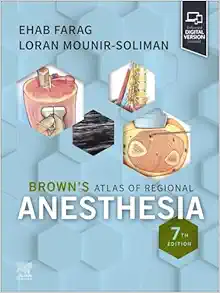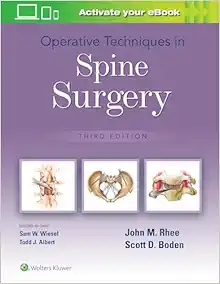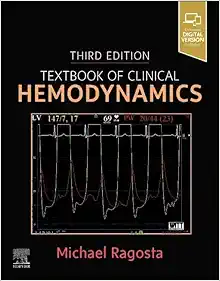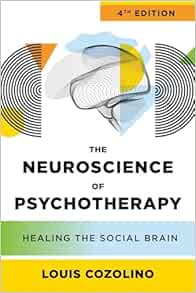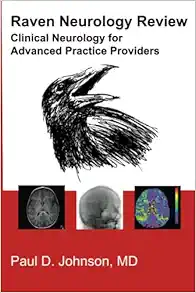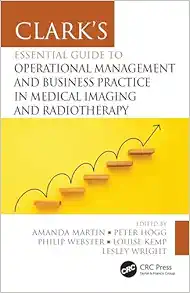The Complete Guide to: Neurology (PDF)
15 $
Format : Publisher PDF
File Size : 141.2 MB
” data-testid=”conversation-turn-21″>
Introduction:
The Complete Guide to: Neurology is a high-yield study resource designed to aid individuals in preparing for the USMLE and other medical licensing exams. Utilizing effective memory techniques and mnemonics, the guide aims to maximize retention while focusing only on essential, high-yield information. Its integrated approach, which combines disciplines like anatomy, physiology, and pharmacology within specific pathologies, promises a comprehensive understanding of each topic.
Features:
- 30-page Study Guide: A condensed yet highly effective resource that targets high-yield topics.
- 100+ Anki Flash Cards: Utilizes the proven spaced-repetition software Anki to enhance retention and understanding.
- Digital PDF: A convenient format that allows for instant delivery and easy access on various devices.
- Integrated Learning: The guide doesn’t separate subjects into distinct chapters but integrates them, thereby fostering a more comprehensive understanding.
Target Audience:
- Medical Students pursuing MD, DO, PA, MBBS, MBChB
- Nursing Students
- Those preparing for exams like the USMLE, COMLEX, MCCQE, PLAB, or MRCP Licensing exam
Analysis:
- Efficiency: The guide is tailored to avoid any time wasted on low-yield material, making it highly efficient for exam preparation.
- Retention: Memory techniques and mnemonics are effectively utilized to improve recall, which is essential for medical licensing exams.
- Holistic Approach: By integrating various disciplines into the study of specific pathologies, the guide provides a more nuanced and comprehensive understanding of each topic.
- Accessibility: Being a digital PDF, it is easily accessible and can be used across multiple devices, facilitating study on the go.
Personal Reflection:
The guide’s integrated approach is its most unique feature. Unlike other resources that often compartmentalize topics, this guide offers a more holistic understanding, which is vital for medical exams that require a broad-based understanding of various disciplines.
Conclusion:
For anyone preparing for medical licensing exams or pursuing medical or nursing degrees, The Complete Guide to: Neurology serves as an invaluable resource. Its focus on high-yield topics, memory techniques, and an integrated approach makes it highly recommended for exam preparation.
Rating and Review:
5 out of 5 stars. The guide is highly efficient, aiding in maximizing study time and retention. Its digital format adds to its accessibility. A must-have for anyone serious about excelling in neurology-related medical exams.
Tl;dr)))” config=”eyJtb2RlIjoiY2hhdCIsIm1vZGVsIjoiZ3B0LTMuNS10dXJibyIsIm1lc3NhZ2VzIjpbeyJyb2xlIjoidXNlciIsImNvbnRlbnQiOiJbY29udGVuIHRleHRdXG5UbDtkciJ9XX0=”]
The Complete Guide to: Neurology (PDF Book)
Introduction to Neurology
Neurology is the branch of medicine that deals with the study and treatment of disorders of the nervous system. The nervous system is responsible for controlling and coordinating all body functions, including movement, sensation, and cognition. A complete neurologic examination should contain an assessment of sensorium, cognition, cranial nerves, motor, sensory, cerebellar, gait, reflexes, meningeal signs, and other relevant aspects of the nervous system . The study of neurology has a long and rich history, dating back to ancient Egypt, where the first known written record of a study of the anatomy of the human brain was documented in the Edwin Smith Papyrus . Today, neurology is an essential field of medicine that continues to evolve and advance, with new discoveries and treatments being developed regularly.
Studying neurology is crucial because it helps us understand the complex workings of the nervous system and how it relates to human behavior, cognition, and overall health. Neurological disorders can have a significant impact on a person’s quality of life, and early diagnosis and treatment can improve outcomes and prevent further damage. The Complete Guide to Neurology is an excellent resource for practicing clinicians and students, providing a comprehensive and focused presentation of the essentials of neurology . The book covers a wide range of topics, including the history of neurology, neurological examination techniques, and the latest advances in the field .
In conclusion, neurology is a fascinating and critical field of medicine that plays a crucial role in understanding and treating disorders of the nervous system. The study of neurology has a rich history, and new discoveries and treatments are continuously being developed. The Complete Guide to Neurology is an excellent resource for anyone interested in learning more about this field, providing a comprehensive and focused presentation of the essentials of neurology . Whether you are a practicing clinician or a student, this guide is an invaluable tool for enhancing your knowledge and understanding of neurology.
Anatomy and Physiology of the Nervous System
The nervous system is a complex network of cells and tissues that is responsible for controlling and coordinating all of the body’s functions. At the core of this system are neurons, specialized cells that are designed to transmit information throughout the body. The structure of a neuron is uniquely suited to its function, with long, branching extensions called dendrites that receive incoming signals and a single, elongated axon that carries outgoing signals to other neurons or to muscles and glands . The Na+/K+ pump is one of the most important components of the neuron, as it maintains the concentration gradients necessary for proper signaling . By understanding the anatomy and physiology of neurons, we can better appreciate how they work together to process information and generate a response.
The nervous system can be divided into two main parts: the central nervous system and the peripheral nervous system . The CNS consists of the brain and spinal cord, which are responsible for controlling thought, movement, emotion, and vital functions such as breathing and heart rate . The PNS, on the other hand, consists of all the nerves that extend from the CNS to the rest of the body. This includes sensory nerves that transmit information from the body to the CNS, as well as motor nerves that control movement and other functions . By understanding the organization of the nervous system, we can better appreciate how different regions work together to control the body’s functions.
The spinal cord and brain are two of the most important structures in the nervous system. The spinal cord serves as a relay between the brain and the rest of the body, transmitting sensory information up to the brain and motor commands down to the muscles and glands . The brain, on the other hand, is responsible for processing this information and generating appropriate responses. It is divided into several regions, each of which is specialized for different functions such as perception, movement, and emotion . By understanding the anatomy of the spinal cord and brain, we can better appreciate how these structures work together to control the body’s functions.
Neurological Disorders and Diseases
Neurodegenerative disorders, such as Alzheimer’s and Parkinson’s disease, are among the most common neurological disorders affecting individuals worldwide. Alzheimer’s disease is a progressive neurodegenerative disorder characterized by memory loss, cognitive decline, and behavioral changes . Parkinson’s disease, on the other hand, is a chronic and progressive movement disorder that affects the nervous system and causes tremors, rigidity, and difficulty with coordination . Other neurodegenerative disorders include Huntington’s disease and multiple sclerosis, which can also have a significant impact on an individual’s quality of life . Although there is currently no cure for these disorders, early diagnosis and treatment can help manage symptoms and improve overall quality of life.
Stroke and traumatic brain injury are two other major neurological disorders that can have a significant impact on an individual’s life. Stroke occurs when blood flow to the brain is interrupted, leading to brain damage and potential disability . TBI, on the other hand, can result from a force transmitted to the head or body, leading to neuropathologic damage and dysfunction . Immediate assessment and treatment are critical in both cases to minimize the risk of long-term complications and improve outcomes .
Epilepsy and seizure disorders are another common group of neurological disorders that can have a significant impact on an individual’s life. Epilepsy is a neurological disorder characterized by recurrent seizures, which can range from mild to severe and can have a significant impact on an individual’s quality of life . Diagnosis of epilepsy and seizure disorders typically involves a detailed clinical history and ancillary tests . Treatment may include medication, surgery, or other interventions to help manage symptoms and improve overall quality of life .
Diagnostic Techniques and Treatment Options
Diagnostic techniques play a crucial role in the field of neurology, as they enable physicians to identify and diagnose neurological disorders accurately. One of the most commonly used imaging techniques in neurology is Magnetic Resonance Imaging . MRI provides detailed images of the brain and spinal cord, which can help identify structural abnormalities, such as tumors, lesions, and hemorrhages . Other imaging techniques, such as Computed Tomography scans and Positron Emission Tomography scans, are also used to diagnose neurological disorders . These imaging techniques are essential for identifying the underlying cause of neurological symptoms and determining the appropriate treatment plan.
Electrophysiological tests, such as Electroencephalography and Electromyography , are also commonly used in neurology. EEG measures the electrical activity of the brain, which can help diagnose conditions such as epilepsy and sleep disorders . EMG measures the electrical activity of muscles and nerves, which can help diagnose conditions such as peripheral neuropathy and myopathy. These tests are non-invasive and can provide valuable information about the functioning of the nervous system.
Treatment options for neurological disorders vary depending on the underlying condition and its severity. Medications, such as anti-epileptic drugs and muscle relaxants, are commonly used to treat neurological disorders . In some cases, surgery may be necessary to remove tumors or correct structural abnormalities. Other treatment options, such as physical therapy and occupational therapy, can help improve the functioning of the nervous system. It is important to note that early diagnosis and treatment are crucial for the successful management of neurological disorders . Therefore, if you experience any neurological symptoms, such as headaches, seizures, or numbness, it is essential to seek medical attention promptly.
Future of Neurology
The future of neurology is exciting, with advances in technology and research providing new opportunities for understanding and treating neurological disorders. The Brain Research through Advancing Innovative Neurotechnologies Initiative, launched in 2013, aims to accelerate the development of new technologies and tools to better understand the brain . This initiative has the potential to revolutionize our understanding of the brain and lead to new treatments for neurological disorders. Additionally, biomarkers have emerged as a promising tool for diagnosing and monitoring neurological diseases . As technology continues to advance, it is likely that new diagnostic and treatment options will become available, improving outcomes for patients with neurological disorders.
Potential breakthroughs in the treatment of neurological disorders are also on the horizon. Research into functional neurological disorders , which are characterized by neurological symptoms that cannot be explained by a medical condition, is yielding promising results . Encouraging studies suggest that FND may be reversible, offering hope to patients who have previously been told that their symptoms are untreatable. Additionally, research into traumatic encephalopathy syndrome is shedding light on the long-term effects of traumatic brain injuries . As our understanding of neurological disorders continues to grow, we can expect to see new and innovative treatments become available.
As with any field of medicine, there are ethical considerations in neurology research and treatment. The COVID-19 pandemic has brought these considerations to the forefront, with clinicians facing difficult decisions about how to allocate limited resources and provide care to patients with neurological disorders . Additionally, the use of emerging technologies, such as deep brain stimulation and brain-computer interfaces, raises ethical questions about patient autonomy and the potential for unintended consequences . As the field of neurology continues to evolve, it is important that ethical considerations are taken into account to ensure that patients receive the best possible care while also respecting their autonomy and rights.
Related Products
Medical Book
Medical Book
Medical Book




